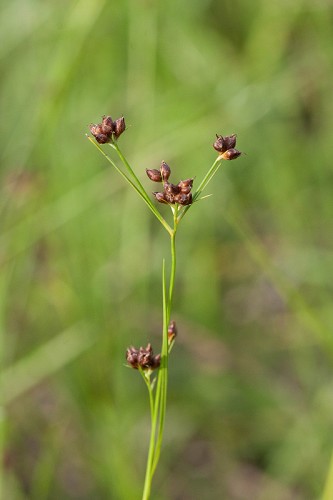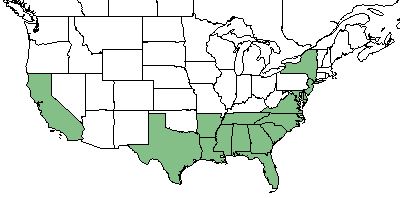Difference between revisions of "Rhynchospora globularis"
(→Ecology) |
(→Ecology) |
||
| Line 36: | Line 36: | ||
Flowering often occurs during the spring and summer months; largely in May and June producing the most blooms. <ref name= "Pan Flora"> [http://www.gilnelson.com/PanFlora/ Pan Flora]</ref> | Flowering often occurs during the spring and summer months; largely in May and June producing the most blooms. <ref name= "Pan Flora"> [http://www.gilnelson.com/PanFlora/ Pan Flora]</ref> | ||
<!--Timing off flowering, fruiting, seed dispersal, and environmental triggers. Cite PanFlora website if appropriate: http://www.gilnelson.com/PanFlora/ --> | <!--Timing off flowering, fruiting, seed dispersal, and environmental triggers. Cite PanFlora website if appropriate: http://www.gilnelson.com/PanFlora/ --> | ||
| − | + | ===Seed dispersal=== | |
| + | This species is thought to be dispersed by consumption by vertebrates. <ref> Kirkman, L. Katherine. Unpublished database of seed dispersal mode of plants found in Coastal Plain longleaf pine-grasslands of the Jones Ecological Research Center, Georgia.</ref> | ||
<!--===Seed bank and germination===--> | <!--===Seed bank and germination===--> | ||
<!--===Fire ecology===--> <!--Fire tolerance, fire dependence, adaptive fire responses--> | <!--===Fire ecology===--> <!--Fire tolerance, fire dependence, adaptive fire responses--> | ||
Revision as of 15:34, 4 September 2018
| Rhynchospora globularis | |
|---|---|

| |
| Photo by John Gwaltney hosted at Southeastern Flora.com | |
| Scientific classification | |
| Kingdom: | Plantae |
| Division: | Magnoliophyta - Flowering plants |
| Class: | Liliopsida – Monocotyledons |
| Order: | Poales |
| Family: | Cyperaceae |
| Genus: | Rhynchospora |
| Species: | R. globularis |
| Binomial name | |
| Rhynchospora globularis Chapm. Small | |

| |
| Natural range of Rhynchospora globularis from USDA NRCS Plants Database. | |
Contents
Taxonomic Notes
Synonym: none
Variety: none
Description
R. globularis is a annual/perennial graminoid of the Cyperaceae family that is native to North America.[1]
Distribution
Found largely throughout the southeastern United States, R. globularis is specifically in Florida, Georgia, South Carolina, North Carolina, Virginia, Maryland, New Jersey, New York, Tennessee, Alabama, Mississippi, Louisiana, Texas, Arkansas, as well as in the western state California. [1]
Ecology
Habitat
Sandy depressions, wet ditches, powerline corridors, and savannas are common habitats for R. globulairs.[2]
Phenology
Flowering often occurs during the spring and summer months; largely in May and June producing the most blooms. [3]
Seed dispersal
This species is thought to be dispersed by consumption by vertebrates. [4]
Conservation and Management
R. globularis is classified as endangered in Maryland, Michigan, New Jersey, Ohio, and is of special concern in Kentucky. [1]
Cultivation and restoration
Photo Gallery
References and notes
- ↑ 1.0 1.1 1.2 USDA Plant Database
- ↑ Weakley, A. S. (2015). Flora of the Southern and Mid-Atlantic States. Chapel Hill, NC, University of North Carolina Herbarium.
- ↑ Pan Flora
- ↑ Kirkman, L. Katherine. Unpublished database of seed dispersal mode of plants found in Coastal Plain longleaf pine-grasslands of the Jones Ecological Research Center, Georgia.